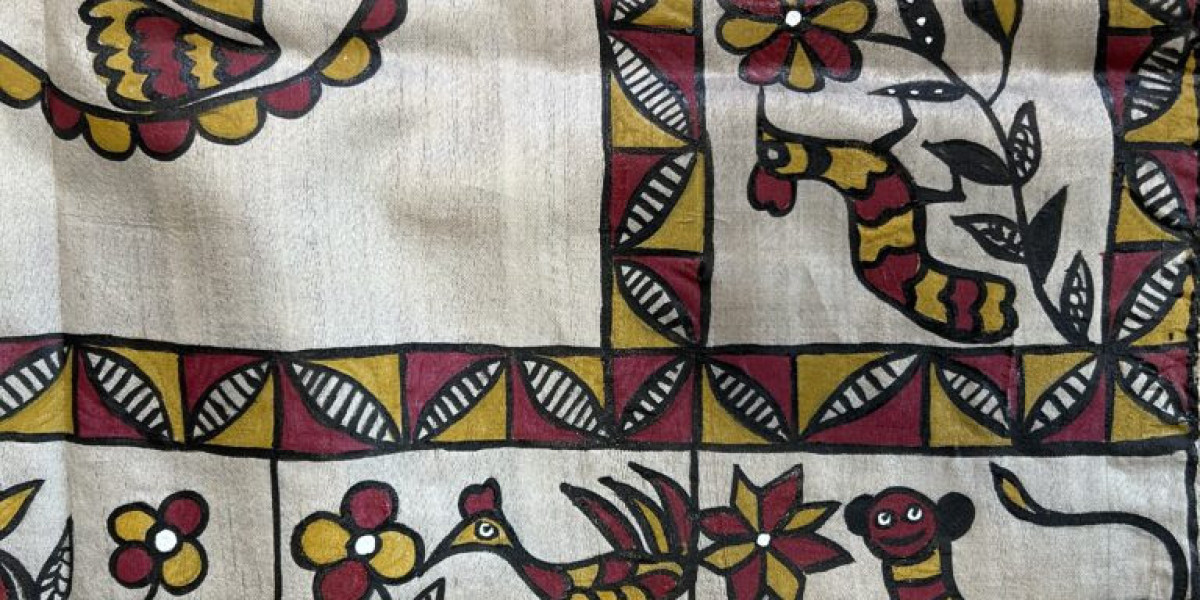The world of sarees is vast and diverse, with each region of India offering its unique style, fabric, and craftsmanship. Among these, the Sohrai Saree stands out as a remarkable piece of cultural heritage. Originating from the tribal regions of Jharkhand, Sohrai Sarees are not just garments but a representation of the rich traditions and artistic skills of the local artisans. This article delves into the history, significance, and distinctive features of the Sohrai Saree, highlighting why it is a treasured addition to any wardrobe.
The Origin and History of Sohrai Saree
The Sohrai Saree gets its name from the Sohrai festival, a significant harvest celebration among the tribal communities in Jharkhand. The festival is marked by vibrant wall paintings, which depict scenes of daily life, animals, and nature using natural pigments. These intricate designs have been translated onto fabric, giving birth to the unique Sohrai Saree.
Traditionally, the Sohrai paintings are done by women of the tribal communities, passing down their skills through generations. The art form itself is believed to have been practiced for over a thousand years, with its roots deeply embedded in the cultural fabric of the region. The Sohrai Saree, therefore, is more than just a piece of clothing; it is a wearable canvas that tells the story of a community’s connection to nature and its artistic legacy.
Distinctive Features of the Sohrai Saree
What sets the Sohrai Saree apart from other types of sarees are its distinctive features, which include:
1. Unique Artistry
The hallmark of a Sohrai Saree is its intricate and vibrant designs. The patterns are often inspired by the traditional Sohrai wall paintings and feature motifs such as animals, birds, plants, and abstract forms. These designs are meticulously hand-painted or block-printed, making each saree a unique piece of art.
2. Natural Dyes
One of the most commendable aspects of the Sohrai Saree is the use of natural dyes. Artisans use locally sourced materials like red ochre, black soot, white kaolin, and yellow turmeric to create the colors. This not only makes the sarees eco-friendly but also ensures that the colors are rich and earthy, maintaining their vibrancy over time.
3. Handwoven Fabric
The fabric used for Sohrai Sarees is usually handwoven cotton or silk. The choice of fabric ensures that the sarees are comfortable to wear and drape beautifully. The combination of natural fibers and dyes results in a saree that is breathable, soft, and perfect for various climates.
4. Cultural Symbolism
Each motif on a Sohrai Saree carries cultural significance. For instance, animal motifs might symbolize fertility and prosperity, while geometric patterns could represent different aspects of tribal life. Wearing a Sohrai Saree is, therefore, a way of connecting with and honoring the cultural heritage of the tribal communities of Jharkhand.
The Making of a Sohrai Saree
Creating a Sohrai Saree is a labor-intensive process that involves several steps:
- Design Conceptualization: The process begins with conceptualizing the design, which is often inspired by traditional Sohrai paintings. The designs are carefully planned to ensure they reflect the cultural heritage and aesthetic values of the community.
- Fabric Preparation: The chosen fabric, usually handwoven cotton or silk, is prepared by washing and stretching it to ensure it is ready for dyeing and painting.
- Dyeing: Natural dyes are prepared using ingredients like turmeric, soot, and ochre. The fabric is then dyed, often multiple times, to achieve the desired base color.
- Painting/Printing: Once the fabric is dyed, the intricate designs are either hand-painted or block-printed onto the fabric. This step requires a high level of skill and precision, as the motifs are detailed and complex.
- Finishing Touches: After the designs are applied, the saree undergoes a final wash to set the colors and remove any excess dye. It is then ironed and prepared for sale.
Wearing and Styling Sohrai Saree
A Sohrai Saree is a versatile garment that can be styled for various occasions. Here are some tips on how to wear and accessorize a Sohrai Saree:
1. For Formal Events
Pair your Sohrai Saree with a simple blouse in a complementary color. Opt for minimalistic jewelry, such as a pair of statement earrings or a delicate necklace, to let the saree’s intricate designs take center stage. Complete the look with a neat bun or a classic updo.
2. For Casual Wear
For a more relaxed look, choose a Sohrai Saree with lighter designs and pair it with a casual blouse. Add some bohemian accessories like bangles or a chunky necklace, and wear your hair down in loose waves.
3. For Festivals and Celebrations
Embrace the vibrant spirit of the Sohrai Saree by choosing one with bold designs and rich colors. Pair it with traditional jewelry, such as jhumkas or a maang tikka, and style your hair in a traditional braid adorned with flowers.
Conclusion
The Sohrai Saree is a beautiful embodiment of cultural heritage, artistic expression, and sustainable fashion. Its unique designs, use of natural dyes, and handwoven fabrics make it a prized possession for anyone who appreciates the artistry and tradition of Indian textiles. By choosing to wear a Sohrai Saree, you not only adorn yourself in a piece of art but also support the artisans who keep this incredible tradition alive. Explore the exquisite collection of Sohrai Sarees at Tittibha and add a touch of heritage and elegance to your wardrobe.








